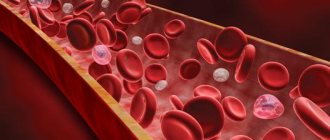In men, brown urine is characterized by pathological or physiological changes. Most often this is accompanied by additional symptoms. There are both harmless and pathological causes. The first option includes the consumption of any specific foods, as well as medications or dehydration.
By the way, most men suffer from the latter because they do not drink enough water. In this case, the matter can be fixed: replenish the body with water. Medications that also cause brown urine include antibiotics, laxatives, especially those containing sena or cascara. As for eating foods, brown urine can be caused by beer, black tea, rhubarb, legumes, and aloe.
Physiological causes of dark urine
Urine also turns dark color due to simple philological processes, and not just due to disorders in the body. If a person has doubts about the shade of urine, it is first recommended to consider the range of natural factors that affect its shade, but do not indicate pathologies:
- Low fluid levels over the past few days. Pigmentation, designed for a larger volume of liquid, intensively colors the existing one.
- Excessive physical activity. During exhausting work, high physical activity, and sports training, substances are produced that will cause external changes.
- High air temperature. In hot weather, urine is darker than in cold weather. This is due to the loss of fluid by the body.
- Taking medications. Components of medications color urine in shades uncharacteristic of its natural appearance.
- Consumption of products. Similar to the previous point.
Please note that urine in the morning is darker than in the afternoon and evening, because the person does not drink water at night.
Which foods in the diet affect the color of urine (does not harm health in any way and does not indicate pathologies):
- tea and coffee, especially highly concentrated (strong);
- meat, especially beef;
- legumes;
- carrot;
- beet;
- blueberry.
Eating Certain Foods May Affect the Color of Urine
Many brightly colored vegetables and fruits, due to their high content of certain substances, affect the color of urine. For example, beets. It contains a lot of iron, which is responsible for giving the liquid its red color.
Which drugs have a particularly intense effect on the external state of urine:
- sulfonamides;
- acetylsalicylic acid (aspirin);
- ascorbic acid;
- riboflavin.
Prevention
In the absence of clear signs of the disease, in the case of a high predisposition to them, it is worthwhile to qualitatively adjust your lifestyle - starting with nutrition and ending with physical activity and limiting (preferably a complete refusal) the consumption of alcohol and nicotine, since a healthy lifestyle is the key to health. It is also very important to adhere to the daily moisture intake regime - at least 2 liters per day, but not beer. Drink filtered water, milk and juices.
If you are prone to developing urolithiasis, you should limit your intake of animal protein and table salt as much as possible.
If a man's urine has changed color under the influence of medications or foods, try to give them up and observe the situation. If the smell and color return to normal within a couple of days, there is no need to worry, but if not, an examination by a specialist is required.
What does darkening of color indicate?
There are many natural causes of brownish urine that are unique to women.
The fact is that in the body of representatives of the fairer sex, the endometrium constantly ages, and this process is absolutely not associated with age-related changes.
If your menstruation began a few days later, then your urine will turn a distinct brown color, since during the delay this aging occurred.
However, such changes should not be taken lightly, since at the same time, brown urine may indicate the presence of a number of genitourinary diseases, including cervical cancer, some sexually transmitted diseases, as well as inflammatory processes localized in the pelvic organs . And the last reason, unique to women, is the onset of menopause.
Physiological causes of atypical urine color in adults include factors that do not belong to any diseases. If fresh urine suddenly changes color, has a tea-colored tint, etc., this may be due to the following:
- foods eaten the day before (beets, blueberries, meat, eggs, red peppers), cranberry juice drunk;
- excessive intake of alcohol, strong tea, coffee;
- medications or vitamins you take;
- upcoming menstruation in women;
- insufficient amount of fluid in the diet;
- changes characteristic of the body in old age.
Also, discolored urine is often associated with excessive physical activity. Exhaustive work and hard training can lead to the production of substances that affect the coloring process of urine.
The color of human urine is often affected by weather conditions. It is known that in the hot season, urine is darker than in the cold months. Experts explain this phenomenon by the loss of fluid that occurs at high air temperatures.
In addition to the changed color, you should pay attention to the smell of urine, which sometimes worsens in the morning and is present throughout the day. Thus, the “aroma” of rotten fish is associated with impaired liver function, and urine smelling like ammonia indicates a lack of fluid in the body, or the presence of infectious processes in the urinary system.
With the development of pathological processes in the body, urine can acquire a wide range of shades. Any such changes often indicate the presence of dangerous diseases, which requires urgent treatment measures.
Among the common causes of brown urine in women and men, experts call:
- Liver diseases (hepatitis).
- Kidney diseases (pyelonephritis).
- Bladder pathologies (cystitis).
The release of brownish urine often accompanies the pathogenesis of jaundice (hemolytic, mechanical, parenchymal) and acute intestinal diseases. In women, pathologies of the internal reproductive organs predominate among the causes of dark-colored urine. A delay in menstruation in pregnant women can also provoke a violation. Brown urine often appears in bedridden patients.
The cause of brown urine in men is often prostatitis, scrotal injuries, inflammation of the epididymis, pathologies of the testes and vas deferens. In such cases, the patient additionally develops weakness, nausea, increased body temperature, pain in the head of the penis, back, sides or lower abdomen, and discomfort during urination.
Brown or sallow-colored urine sometimes occurs in patients with melanomas (skin cancer) and high blood pressure. A shade of rust indicates the presence of pus or blood in the urine, which enters it during various inflammatory processes. The orange color is associated with taking Rifampicin (a drug used for tuberculosis).
Black urine is a significant cause for concern. This phenomenon can become a symptom of cirrhosis of the liver, urolithiasis, cancer of the pancreas, liver, kidneys, Marchiafava-Micheli disease (a rare form of hemolytic anemia). Also, urine can become very dark due to copper poisoning or excess iron in the body.
Red urine appears in women and men for various reasons. In the fairer sex, the pathology is caused by:
- tumors of the uterus;
- erosions;
- ectopic pregnancy;
- advanced forms of cystitis;
- uterine bleeding.
Pink urine appears with an irregular menstrual cycle, against the background of an increased content of leukocytes, ovarian dysfunction, and taking oral contraceptives.
Reddish urine in men can indicate the following pathologies:
- prostate cancer;
- adenoma;
- prostatitis;
- injuries of the urethra and scrotum.
Burgundy urine may be excreted after long-term use of Aspirin, Purgen. Cherry, which has a thick consistency, can indicate the presence of internal bleeding (if there are blood clots in it). When brick urine appears, there is a possibility of developing hematuria (the presence of red blood cells in the biological fluid).
Excessive physical exertion and heavy lifting provoke the release of blood into the urine and its redness. In such cases, the normal color of urine is often restored without any treatment, subject to rest for several days.
Blue, green, or light blue urine is a common consequence of chemotherapy in patients of both sexes. The appearance of such shades of urine is facilitated by taking Cycloferon and treatment with methylene blue. Also, azure fluid during urination can become a sign of impaired metabolism in the gastrointestinal tract, the presence of pus in the urinary system, and increased calcium levels in the blood.
If the urine turns green, this sometimes indicates the effects of taking antibiotics that contain dyes. The list of diseases that can give urine a green tint includes:
- Dysbacteriosis.
- Pyuria.
- Genital infections (gonorrhea and others).
We suggest you read: How to cure thrush once and for all
In some cases, green urine is caused by drinking beer that contains synthetic dyes.
Lack of color
Urine that does not have any color, but contains sediment and smells like acetone, sometimes appears in patients with diabetes. Also, urine has no color due to kidney failure and lack of pigment substance. In early pregnancy, this biological environment becomes discolored due to hormonal changes and toxicosis.
Urine that is dark or has an atypical color in children is also often associated with pathological processes. There are several reasons for the violation:
- dark brown color of urine occurs against the background of hemolytic anemia, damage to liver cells by toxins, formation of stones in the urinary system, consumption of vitamins B or C;
- a blue tint sometimes indicates a rare disease - hypercalcemia, associated with elevated levels of calcium in the blood;
- the dark yellow color appears due to dehydration due to vomiting or diarrhea, as a result of taking ascorbic acid preparations.
Urine without any shade is separated from infants immediately after birth. Urine becomes yellow after the newborn’s genitourinary system is fully formed.
Experts distinguish two groups of reasons for the appearance of dark urine. This is a natural and pathological character.
- In the first case, a small amount of liquid consumed during the day and the intake of certain food products are isolated, which contribute to this manifestation. In the hot season, increased physical activity on the human body, excessive and prolonged use of drugs are provocateurs for changes in the color of urine.
- The dark color is characteristic of the morning. At night, the concentration in the secretions increases, which provokes a change in color. Often in the summer, at high temperatures, the process of sweating intensifies, and urine at this time becomes more concentrated and dark in color. The natural factor can be corrected by increasing fluid intake, so that the discharge will become a light, normal color.
- The discharge acquires a dark yellow tint due to the complex of vitamins C and B that a person consumes. The category of drugs with such action includes drugs against malaria, or against tuberculosis. Drugs that have a laxative effect help to quickly remove fluid from the body. Thus, urine decreases, urochromic concentration becomes higher.
If you regularly eat legumes, beef, rhubarb, then you should not be alarmed by color changes in your urine. Don't forget about drinks, for example, strong black tea. Over a short period of time, the color will become lighter and acquire a normal shade.
There is a second group of causes of dark urine; this is a pathological group. This category includes hepatitis diseases, cirrhosis of the liver, which has a viral, alcoholic, or drug etiology. Experts include the papilla of Vater, gallstone disease, pancreatic and liver cancer in this group.
If there is a dark yellow tint, the cause is the development of urolithiasis, because then the urine contains a lot of salts. Often, in addition to the dark tint, particles of blood and a small sediment are observed in the discharge, which is caused by the ingress of various substances along with salts.
Pathologies and deviations from the norm
What diseases or pathologies may be accompanied by darkening of urine:
- tumors in internal organs;
- liver diseases (especially cirrhosis and hepatitis);
- problems in the functioning of the gallbladder (cholestasis, chochelitiasis);
- kidney disease;
- hemolytic anemia;
- pelvic organ infections;
- intoxication with copper salts;
- lack of water in the body - dehydration;
- improper metabolism.
With urolithiasis, an excessive amount of salts is excreted into the urine, so its color turns dark. This is the most common cause among other diseases.
If stagnant processes are observed in the kidneys, if a person experiences dehydration for a long time, the urine not only darkens, but acquires a more yellow tint.
Timely appeal
If the darkening is due to natural factors of an internal or external nature, it’s okay. It is enough to exclude this factor, and the desired shade will be normalized. Then intervention from specialists is not necessary.
If the dark shade persists for several days, then it’s worth taking action. It is worth speeding up your visit to a specialist when, in addition to the dark shade of the discharge, other alarming symptoms appear:
- Fatigue, unexplained headaches;
- feverish state, the patient is shivering;
- attacks of nausea and vomiting;
- frequent urination, which is accompanied by unpleasant, painful sensations, burning, and other discomfort;
- The skin and mucous membranes gradually turn yellow;
- localizes pain in the lumbar region, abdomen, hypochondrium on the right side;
- there is a back on the skin.
Then you should immediately seek advice from a specialist. In addition to these symptoms, blood in the discharge, mucus, even purulent particles may be observed. It may have an uncharacteristic unpleasant odor. After examination and thorough diagnosis, the attending physician will be able to accurately determine the cause of the change in the color of the discharge.
Brown urine in women
The reasons discussed above are completely relevant for women of different ages, but the pregnancy period should be highlighted separately. In the first trimester, toxicosis is possible; the woman experiences the urge to vomit, which causes her body to become dehydrated. The same applies to persistent diarrhea. Dehydration is the reason for a higher concentration of pigment per small amount of fluid excreted by the kidneys.
Some vitamin complexes that are prescribed to a woman during pregnancy can also contribute to the coloration of urine.
In the second half of pregnancy, the uterus enlarges and puts pressure on surrounding organs, which disrupts the flow of bile. The result is urine darkens. The condition needs to be controlled, but it is not given much importance. After the birth of the child, health is restored, the color of urine returns to normal.
If a pregnant woman's urine has acquired a greenish tint, this indicates the development of pyelonephritis, a kidney disease. You need to see a doctor. The liquid acquires a green tint due to the ingress of pus and mucus into it.
Injuries have a greater impact on women's health than men. Therefore, in case of damage, the possibility of changing the shade of urine for a short time cannot be ruled out.
Changes in the color of urine in women usually occur with inflammatory diseases. But the shade can change due to dehydration, drinking drinks and food with dyes, exposure to toxins and the use of certain medications. The defect appears in diseases of the genital area. These are sexually transmitted diseases, cervical tumors, disintegrating uterine fibroids or nonspecific inflammation of the genital tract. In addition to color changes, there is a sharp foul smell of discharge and pain when urinating.
Causes of the disorder:
- Fluid deficiency in the body and high levels of urochromes.
- Consumption of products with dyes.
- Jaundice of viral etiology or hepatitis.
- Hemolytic anemia and elevated bilirubin levels.
- Urinary tract infections.
- Vasculitis.
- Pregnancy period.
- Kidney diseases.
- Pancreatic and liver cancer.
- Dietary factors.
- Various injuries.
To identify the true cause of deviations, the doctor prescribes general and biochemical tests of urine and blood. Based on the test results, a treatment and prevention plan for the disorder is drawn up.
The causes of dark urine in women are divided into natural and pathological.
Natural causes may be due to the influence of external and internal factors that increase the level of urochrome content, but do not cause harm to the body.
We invite you to familiarize yourself with: A drug for the prevention of potency for men
These include:
- low fluid intake, and, as a result, dehydration of varying severity (the less water a woman consumes, the darker her urine and the more concentrated);
- physical fatigue and exposure to high temperatures, when fluid entering the body is excreted through sweat;
- consumption of foods that can color urine dark (beef, rhubarb, liver, beans, black tea, coffee, etc.);
- compliance with various mono-diets (for weight loss);
- long-term therapy with certain medications. For example, taking laxatives leads to increased excretion of fluid in the feces, and antimalarial and anti-tuberculosis drugs increase the concentration of pigment in the urine. A rich dark brown color is also observed after antibiotics;
All causes of dark urine can be divided into two broad groups: natural, which do not pose any danger, and pathological, associated with the presence of a number of diseases.
An increase in bilirubin is always associated with a change in urine color
You shouldn’t panic right away when you notice a change in color; you should first rule out external factors and observe for several days. For example, change your drinking regime, make sure that your body receives at least two liters of liquid per day, and more in hot weather. If there is no improvement, consult a urologist or therapist.
Non-hazardous
The fact that women produce dark urine may be due to some physiological factors:
- insufficient intake of normal fluids into the body;
- eating certain foods (legumes, rhubarb, beef, strong black tea, beets);
- high ambient temperature;
- increased physical activity;
- taking certain medications (among them vitamin complexes, antimalarials, antituberculosis drugs, laxatives, nitrofuran derivatives).
Pathological
Stable darkening of urine, when natural causes and exposure to external factors are excluded, may indicate the following diseases:
- urolithiasis disease;
- cholelithiasis;
- hepatitis;
- liver cancer;
- hemolytic anemia;
- polycystic disease;
- kidney tumors;
- copper poisoning;
- consequence of injury;
- liver cirrhosis of various origins (alcoholic, drug, viral);
- pancreatic cancer, accompanied by a significant violation of the outflow of bile;
- glomerulonephritis in the oliguria stage;
- certain diseases associated with metabolism (hemochromatosis, porphyria or tyrosinemia).
As you can see, the list is very large, and some diseases can be classified as deadly, so there is no need to postpone a visit to the doctor. An experienced specialist will be able to guess the disease that provoked the change in urine just by the shade.
So, if the urine has a pronounced dark brown color, the cause may be pathological processes in the liver, which also increase the level of bile pigments, such as bilirubin. This is especially pronounced in cholestasis, when an obstacle, for example a stone, appears in the path of bile outflow.
Intrahepatic cholestasis
If the urine is too dark yellow in color, you can suspect urolithiasis, because it contains more salts in the urine. When the urine is very dark, possibly mixed with blood, it is likely that you have kidney disease, in which red blood cells get into it, in addition, there is an increased salt content.
Do not try to diagnose yourself; a visit to a doctor is required. You will need blood tests, urine tests, urine culture, ultrasound of the kidneys, and abdominal cavity.
You should especially hurry if there are accompanying symptoms indicating a severe course of the disease:
- increased body temperature, chills;
- itchy skin;
- vomiting, nausea;
- yellowing of the sclera, integument, mucous membranes;
- significant headaches;
- high fatigue, loss of strength;
- pain in the lumbar region, right hypochondrium, in the abdomen;
- frequent urination, accompanied by discomfort, burning, and pain.
Possible diseases
Many conditions and pathologies can provoke darkening of urine in both men and women, including:
- hemolytic anemia;
- liver damage;
- urinary tract infections;
- renal dysfunction;
- poisoning with copper salts;
- oncological diseases of the pancreas, kidneys or liver;
- poor metabolism;
- dehydration of the body.
Cystitis and other urological diseases can also occur with dark colored urine. This is due to staphylococci, gonococci and E. coli. A characteristic symptom is painful urination. The urine becomes cloudy.
Nephritis is accompanied by a slight discharge of urine mixed with blood. This is an infectious disease caused by streptococci. The main reason for its occurrence is hypothermia of the body. Sometimes nephritis leads to anuria, when the ability to excrete urine is completely lost.
Liver cirrhosis develops slowly, but causes dangerous consequences. The reasons for its appearance include toxic alcohol poisoning, exposure to poor ecology, past hepatitis, abuse of food with artificial colors, synthetic additives and preservatives.
Symptoms of cirrhosis include an enlarged spleen, dilated veins in the abdominal area, decreased appetite, malaise, and discomfort in the right hypochondrium. Urine takes on a dark brown tint, it contains yellow foam and spectral stains, which is due to increased levels of bilirubin.
Any change in urine requires medical supervision, provided that the condition is not caused by medications or diet.
Brown urine during pregnancy
During pregnancy, many changes occur in the female body due to hormonal changes. Very often during this period the urine turns brown, which makes the expectant mother worry. Normally, the color of biological fluid is yellow, but the appearance of deviations does not always indicate serious pathologies.
During pregnancy, the genitourinary system experiences increased stress. The growing fetus and enlarged uterus put pressure on the kidneys, complicating their functions. The kidneys have to work for two organisms at the same time - remove metabolic products from the maternal body and the fetal body.
Pathological color appears when:
- Presence of bile pigments and blood.
- The use of medications and dehydration.
- In the presence of urobilin.
Regardless of color, the most important thing is that the liquid is not cloudy. A pregnant woman should regularly undergo urine tests in order to promptly identify possible pathologies.
Also, during pregnancy, the load on the liver increases, which leads to an increase in the level of bilirubin in a woman’s blood and urine.
After childbirth, the woman’s condition returns to normal.
Dark urine in pregnant women is also quite common. In addition to the reasons that determine this change in all other women, there are also specific ones.
In the early stages, darkening often accompanies toxicosis, since vomiting removes a lot of fluid from the body, which leads to dehydration.
At the same time, the amount of urine excreted by the kidneys decreases, and its concentration, accordingly, increases. In cases of toxicosis, accompanied by very frequent vomiting, the urine may additionally smell like acetone.
The next possible reason is excessive load on the liver, leading to an increase in the concentration of bilirubin directly in the blood, and then to its appearance in the urine.
The most dangerous problem that can provoke a clear change in the color of urine is gestational pyelonephritis, in which you should immediately consult a doctor.
With it, as a rule, mucus and pus appear in the urine, and it becomes cloudy.
Of course, you shouldn’t panic at the first signs of a color change; first analyze whether you drank enough liquid, what you ate, or whether you took any medications. If the tint persists, tell your gynecologist, he will first prescribe an additional urine test and, if necessary, send you to a specialized specialist.
Note! The dark color of urine during pregnancy should become a normal shade within 24 hours. If this does not happen, then you should consult an obstetrician-gynecologist, he will prescribe an appropriate examination, which will accurately show the cause of the changes.
During pregnancy, the load on the liver increases, because of this, birubin in the blood increases, this provokes its entry into the secretions. If a woman suffers from pyelonephritis of a gestational nature, then there may be mucus and purulent particles in the urine, and the color of the urine becomes more cloudy.
If you notice darkening in the color of your urine, don't worry. Watch how the discharge acquires a normal shade during the day. Remember about the natural factors that influence such changes, food, liquid. Changes in discharge do not always indicate the presence of some disease.
In a child with a high temperature, such a manifestation is observed. Possible causes: dehydration, significant decrease in diuresis, toxicity. This list also includes poor ventilation and prolonged exposure to the sun.
Brown urine in men
The reasons that may occur in men, in addition to those indicated earlier, can be grouped as follows:
- prostate diseases (especially prostatitis);
- problems with the vas deferens;
- inflammatory processes in the testicles.
Dark urine in men can be due to various reasons.
If a man's blood stagnates in the prostate gland, the urine is excreted with a red tint. A dark rusty tone is characteristic of prostatitis.
Brown urine in men is characterized by physiological and pathological changes. This may occur due to dehydration or serious diseases of the internal organs and genitourinary system. If the changes are caused by pathological phenomena, then accompanying symptoms appear, simplifying the diagnostic process.
We suggest you familiarize yourself with: Therapeutic Chinese patches for prostatitis
Main reasons:
- Diseases of the prostate, testicles and vas deferens.
- Prostatitis.
- Inflammation of the epididymis.
- Scrotal injuries.
- Increased concentration of urochromes.
- Use of medications.
- Jaundice, hepatitis.
- Excessive intake of vitamins B and C and increased red blood cell count.
- Copper poisoning.
- Urinary tract cancer or bacterial infection.
- Liver cirrhosis, anemia and other diseases.
But if you are not taking medications or consuming foods with dyes, the disorder requires medical diagnosis. In addition, the color of biological fluid becomes darker in elderly patients. If this phenomenon persists for several days, you should contact a surgeon or urologist.
When the problem is in the liver
Blood clots in urine when urinating
It is in the liver that the main processes of decomposition and processing of human waste products occur. But in case of its dysfunction, these products begin to enter the bloodstream and the kidneys, which are not able to process them.
So, when the lumen of the bile ducts is blocked (by a stone or a neoplasm), the resulting bilirubin enters the kidneys, where it enters the urine, coloring it dark. The same process occurs as a result of damage to liver tissue due to the presence of cancer, cirrhosis or hepatitis of any nature.
In this case, the clinical picture is complemented by light brown feces, an increase in temperature, a change in the color of the eye sclera and skin (become yellow).
Uncharacteristic color of urine - causes of the disorder in children
Darkening of the color of a child's urine causes panic among parents. But such a disorder does not always indicate a pathological character. The color of the fluid excreted by the kidneys is affected by the foods you eat. So, if your baby has recently eaten carrots, blueberries, beets or rhubarb, then the brown color should not cause concern. The color and smell of discharge are affected by medications and dehydration.
If the changes are accompanied by high fever, abdominal pain and painful urination, then these are signs of the disease. These kinds of symptoms may indicate pyelonephritis. In any case, it is necessary to undergo tests for research. If an increased number of red blood cells is detected, then this is glomerulonephritis, and an increased level of protein may indicate cystitis.
Most often, children's urine changes color due to the fact that they eat many of the same foods that the child likes. For example, cherries, blueberries, beef, beets. This does not affect the state of health and does not signal deviations, but in the future, with unstable nutrition, an excess of some substances and a lack of others, problems may arise.
Prescribed medications and vitamin complexes, hormonal changes and other reasons are also appropriate. However, in some cases, the previously listed common diseases remain possible.
Associated symptoms
Along with a change in the color of urine, other symptoms make it possible to more accurately differentiate the diagnosis and prescribe adequate therapy.
- Painful urination is a common sign of genitourinary disorders. Inflammatory processes in the kidneys, bladder, and genitals are accompanied by back pain and frequent urges. The temperature rises. With prostatitis, normal urination is prevented by the narrowing of the lumen of the urethra, the patient experiences discomfort and cannot urinate for a long time.
- Cutting pain in the abdomen, the appearance of edema, increased blood pressure - symptoms of renal failure, ascending infections of the kidneys and ureters.
- Liver diseases (hepatitis, trauma, intoxication, cholelithiasis) will be accompanied by pain in the right hypochondrium, the appearance of a yellow or orange color of the skin and mucous membranes. The stool becomes colorless.
The natural smell of urine is familiar to the sense of smell. If your urine smells bad, there is a possibility of a pathological process:
- A “mousy” or musty smell is a symptom of the genetic metabolic disorder phenylketonuria.
- The smell of ammonia is characteristic of severe dehydration due to intestinal disorders. Ammonia-smelling urine is observed in patients with genitourinary tract infections.
- A fruity, sweet smell indicates an increased concentration of glucose in body fluids (diabetes).
- A sweet putrid aroma is emitted by urine during purulent, necrotic processes in the urinary tract (pyelonephritis, abscesses, decay of tumor tissue).
- Urine smells like acetone in severe conditions - ketoacidosis in diabetic patients, severe gestosis in pregnant women.
The appearance of foreign impurities and sediment in the urine also indicates that the causes of dark urine in men are abnormal. Thus, the appearance of white threads and flakes indicates inflammation, the presence of bacteria and pus in the urine. Curdled lumps are a symptom of a fungal infection. Bloody impurities occur with bleeding from the excretory tract, glomerulonephritis, damage to the internal walls of organs by sediment particles during stone formation. “Sand” in urine occurs in urolithiasis, kidney stones, and metabolic disorders.
The appearance of accompanying symptoms indicates a pathological change in the color of the discharge.
Dark Urine Treatment Procedure
Before you begin to eliminate the pathology, it is important to find out exactly its cause and coordinate any actions with your doctor. In the absence of obvious physiological reasons for the disorder, you should not delay visiting a medical facility - this can lead to a rapid deterioration of the condition.
If the color of urine has changed due to dietary habits or active sports, baths with herbs and sea salt can help normalize it at home. It is also important to review your diet and avoid heavy physical activity.
Any therapy begins after diagnosis:
- If the problem is in the liver, then a course of anti-inflammatory, hepatoprotective drugs is prescribed. A course of detoxification procedures is carried out: drip solutions of glucose, ascorbic acid. Cell microcirculation is restored to accelerate regeneration processes and normalize fat metabolism: Heparin, Karsil, Eslidin and other drugs will help cope with the problem. When affected by cancer, a number of studies are carried out to determine the possibility of surgery. Additional symptoms: lightening of stool, increased body temperature.
- When the kidneys fail, treatment with antibiotics is required, as well as determining the presence of stones. If stones become obstructed, surgical intervention is possible. Some kidney pathologies cause the discharge of pus; these are usually the causes of cloudy urine in men. If the urine is red in men, then glomerulonephritis is possible - damage to the glomeruli. Additional symptoms: lower back pain, impurities and sediment in the secreted fluid. The movement of stones leads to hematuria - blood clots and droplets in urine, which is a factor in the change in shade.
- Stagnation of urine due to inflammation of the prostate gland is always dark urine in men. A course of antibiotics, antibacterial drugs, rehabilitation therapy and the disease is cured. However, it is important to prevent the chronic development of prostate pathologies, so as not to subsequently treat infertility and complete loss of sexual function.
- Diseases of the bladder and urethra are characterized by the release of pus, blood, and mucus. If a man has cloudy urine, the reasons may lie precisely in diseases of this type. Additional symptoms: burning sensation, discharge from the urethra, redness of the genital organ. There are a lot of provoking factors: from STDs to banal hypothermia, so treatment is prescribed only by a specialist based on the collected medical history and research. Antibacterial therapy and antispasmodics are prescribed.
Injury to the genital organ will lead to rupture of internal tissues, and, consequently, to a change in the tone of urine. It may be red or even black liquid due to a large amount of blood, orange due to the development of pathogenic microflora due to the development of urethritis, or pale yellowish liquid due to impaired functionality of internal organs.
If a man has brought himself to the point of dehydration, drips of solutions are prescribed to restore the level of salts and water in the body tissues. Diagnosing tumors requires constant monitoring of the process and dynamics of cell degeneration. Benign tumors can be removed surgically, malignant ones can be treated with radiation or chemotherapy.
Treatment methods are often medicinal. The color of urine can be any color if tests and studies show normal values. This will mean that the darkening occurred due to the consumption of certain foods or insufficient drinking.
If kidney pathologies or problems with the urinary system are established, which often happens, the following drugs are prescribed:
- Furamag;
- Nystatin;
- Viburcol.
If diseases of the gastrointestinal tract are established, the doctor will probably prescribe drugs from the following list:
- Mezim;
- Karsil;
- Creon;
- Antral.
It is not recommended to prescribe treatment on your own. If there are symptoms indicating a pathology, one of the manifestations of which is a change in the color of urine, you need to seek medical help from a specialist. For prevention, the use of herbal preparations is allowed. Some people may have an allergic reaction, including young children.
There are many reasons for darkening of discharge. Most often, the reason lies in dehydration, that is, it is necessary to restore the necessary water balance, and the discharge will acquire a normal color.
If the dark color persists for a long time, visit a specialist, in particular a nephrologist, or a therapist. You can understand the reason for this manifestation with the help of timely tests. In addition, ultrasound, blood tests, and tomography are distinguished.
The specialist makes nutritional adjustments and selects a special course of treatment, which depends on the form of the inflammatory process.
If swelling or high blood pressure is observed, then it is worth using products that have a diuretic effect.
Principles of therapy
The treatment regimen depends on what disease caused the darkening of the urine. General principles of treatment include restoring water balance and using drugs with antibacterial effects. If dark, cloudy urine is observed in men, which is caused by liver disease, medications are prescribed to improve microcirculation within cells and normalize protein and fat metabolism. The patient may also be given ascorbic acid drips to eliminate the effects of toxins on the liver.
In severe pathologies, a liver transplant may be required. If a man has been diagnosed with kidney disease (pyelonephritis, glomerulonephritis), treatment is carried out in a hospital setting. Therapy involves taking antibacterial and immunosuppressive drugs. In case of serious illnesses, hemodialysis is prescribed.
Treatment of kidney stones is based on the use of drugs that help dissolve stones. In case of complications, surgery cannot be avoided. Diseases of the genital organs, as a rule, are infectious in nature, so the patient is prescribed drugs with an antibacterial effect. If prostate adenoma is detected, transurethral resection or adenomectomy is resorted to. Such manipulations involve the removal of excess tissue that leads to compression of the urethra.
For diseases such as cystitis and urethritis, treatment comes down to the use of antibacterial drugs and immunomodulators. In addition, antiseptic drugs can be used for injection into the urethra. If conservative treatment methods do not have a therapeutic effect, the doctor may decide to perform an epicystomy.
Diagnostics
The diagnostic method depends not only on the shade, but also on the accompanying symptoms. You can evaluate the consistency, presence or absence of clots, uniformity of color, odor characteristics, and sensations when urinating.
If everything is in order, but the color of the liquid is alarming, you can consult a doctor who will give you a referral for laboratory testing. In the morning you need to take a small amount of urine and send it to a medical facility.
Ultrasound is one of the diagnostic methods for an existing problem.
Subsequent tests and studies depend on the result of the laboratory analysis. If concomitant diseases are suspected, the doctor may expand the list of diagnostic procedures. Examples - ultrasound of the abdominal organs, blood test, including an extended one, allowing to determine the inflammatory process, urethroscopy.











